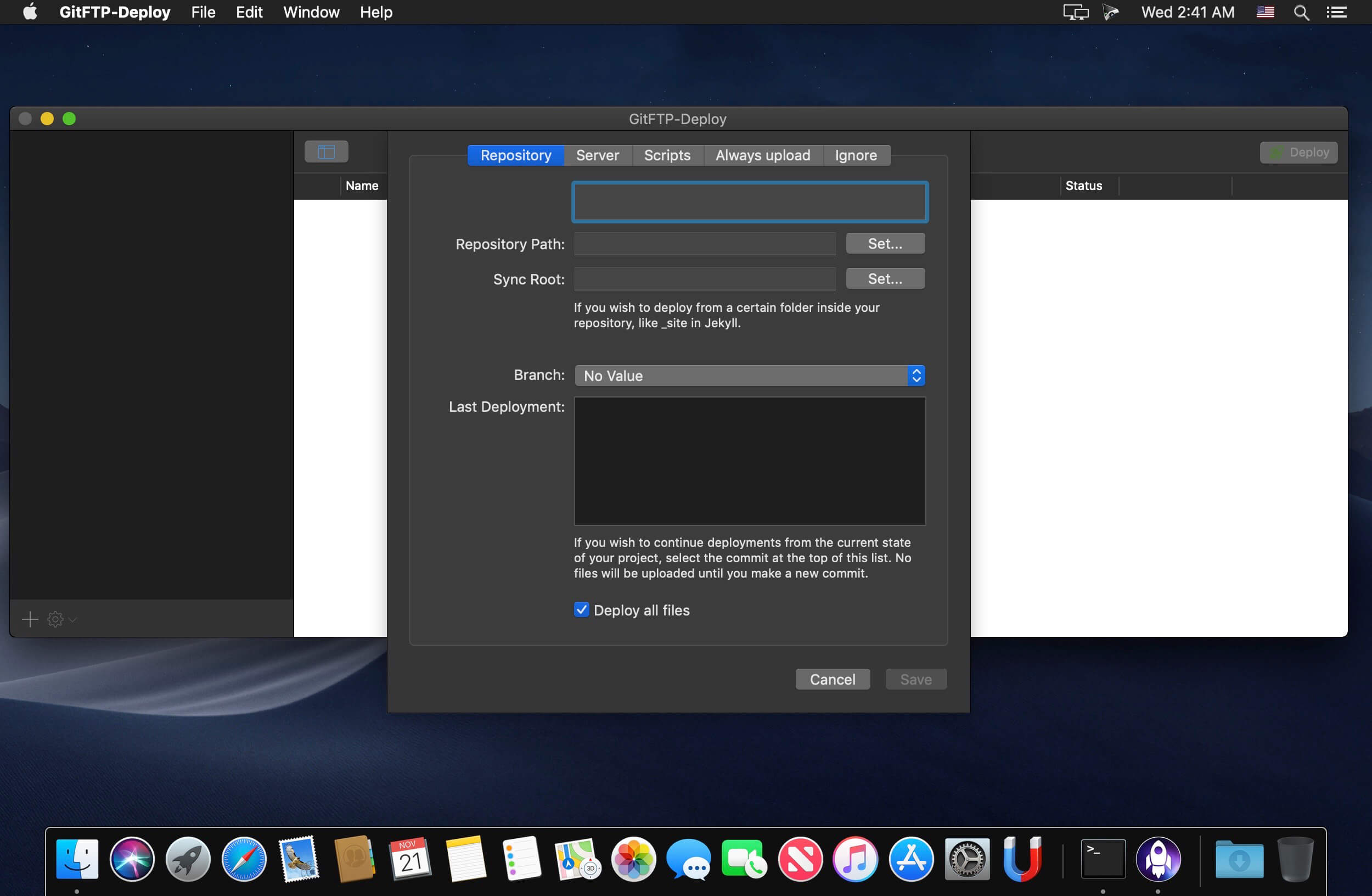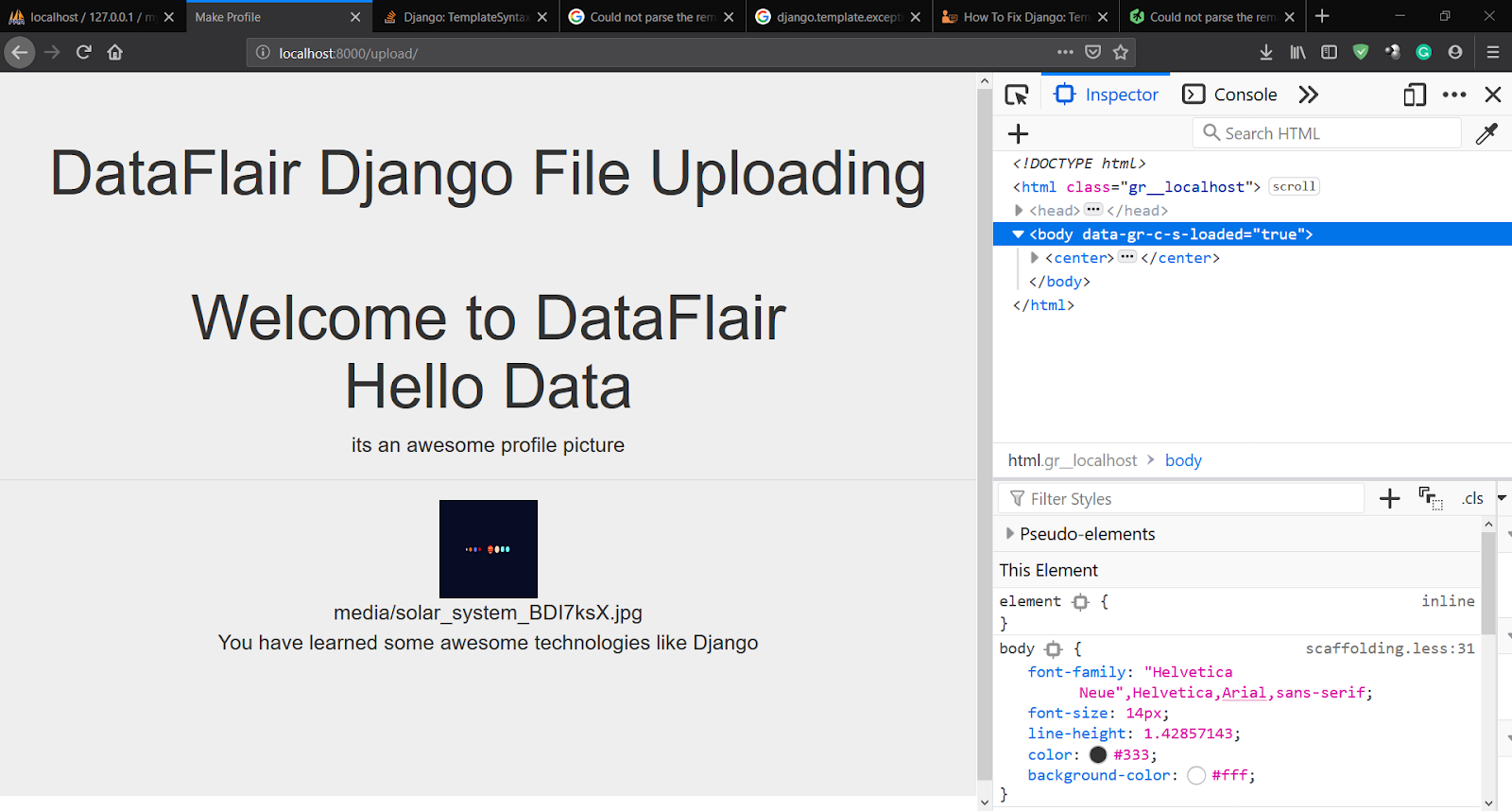

MultipleCompilationErrorsException: startup failed: So let's get our hands dirty and create a ArgoCD AppProject using the argocd CLI called apps2deploy: role token:ġ.) Use argocd CLI to create AppProject, role & permissions incl.
GITFTP DEPLOY HOW TO
There are 2 solutions how to configure the AppProject, role & permissions incl. For example, a CI system may only be able to sync a single app (but not change its source or destination). These can be used to give a CI pipeline a restricted set of permissions. Projects include a feature called roles that enable automated access to a project's applications. ArgoCD projects have the ability to define Project roles: And with such a AppProject you don't even need to create a user like tekton in the ConfigMap argocd-cm. Specified by fault field of the argocd-rbac-cm ConfigMap.īut these additional RBAC rules could be setup the simplest using ArgoCD Projects. RBAC rules set up, otherwise they will fall back to the default policy

When you create local users, each of those users will need additional The problem is mentioned in Argo's useraccounts docs: Or perhaps the article is suggesting the repo is dedicated only to Terraform.
GITFTP DEPLOY CODE
These don't require provisioning new infrastructure, as the code is just placed onto existing infrastructure. For example, this article says "anytime there is a push to the src directory it will kick off the action which will have Terraform deploy the changes made to your website."īut doesn't this only make sense if the change you are making is related to provisioning infrastructure? Why would you want any code push to trigger a Terraform job if most pushes to the codecase have nothing to do with provisioning new infrastrucutre? Aren't most code pushes things like changing some CSS on the website, or adding a function to a back-end node script.

GITFTP DEPLOY MANUAL
It makes sense that anytime one wants to provision something different in their infrastructure that a CI/CD pipeline would add visibility and repeatability to an otherwise manual process.īut some article make it sound as though Terraform is doing the deploying of any change. Release notes were unavailable when this listing was updated.You see a lot of articles on combining GitHub actions with Terraform.A quick and efficient way of pushing changed files to a website via FTP, FTPS or SFTP. No need to remember terminal commands or compiled libraries. Looking for a simple ftp deploy? GitFTP-Deploy is easy to setup and use. This is the deployment tool for git and shared hosts in 2017. If you are doing manual deployment, how easy is it to forget to upload a file? Embrace gitftp deployments and say goodbye to your FTP-client. GitFTP-Deploy is a performant native app for macOSX, based on industry standard tools. No need to go into the deep end of the terminal and compiling dependencies. Works with every type of document, no special environment needed, other than your Mac. You have complete control over the repositories and you don’t need to worry if an external service is down. No need to upload your repositories to an external service like BitBucket or GitHub to deploy. This can be expensive if you are mostly working on projects that are not updated regularly. Most SaaS charge monthly for hosting your repositories. The site is maybe a presentation for a company and does not receive regular updates. While working with smaller sites you sometimes need a convenient way of deploying to a shared host where you don’t have access to SSH. GitFTP-Deploy provides dead-simple FTP deployments for your smaller projects.


 0 kommentar(er)
0 kommentar(er)
